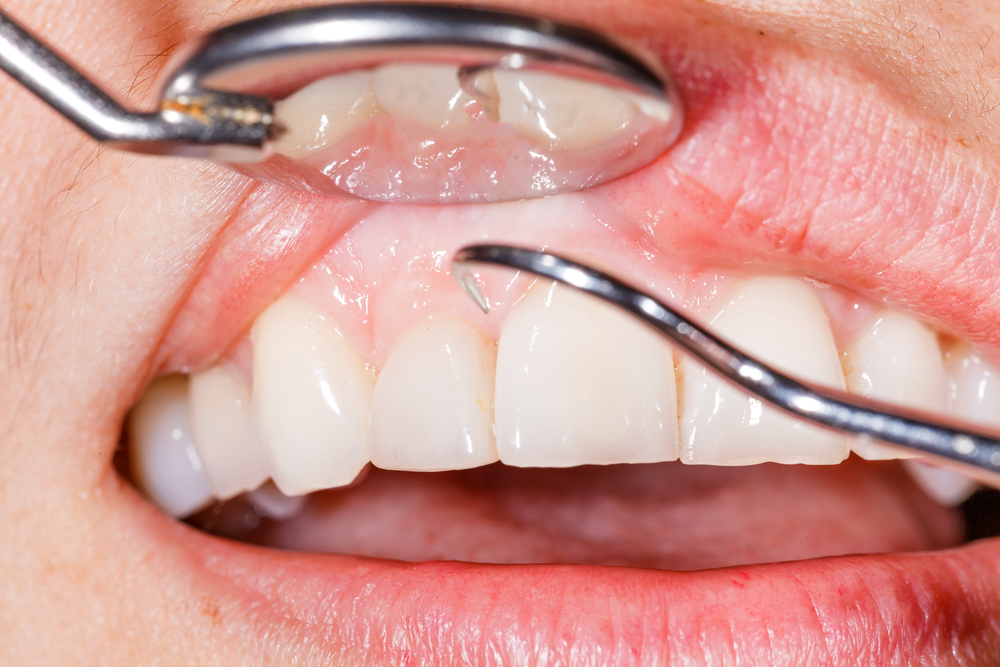Signs It’s Time To Replace Your Dentures
Dentures can be life-changing for those who have lost some or all of their natural teeth. A good quality denture can restore your ability to eat, speak, and smile with...

A gingivectomy is a specific dental surgical procedure used to treat periodontal disease and other gum-related issues. Periodontal disease is an infection of the gums, tissue, and bone that holds your teeth in place. Other gum-related issues tend to be cosmetic, such as correcting a gummy smile or gum contouring, which can affect your smile’s appearance.
According to the American Dental Association, nearly 47% of Americans over the age of 30 have some form of gum disease. Without preventing gum disease or taking proper care once diagnosed, patients who have any form of gum disease will very likely, eventually lose their teeth.
Periodontal disease starts with bacteria already present in the mouth attaching to the teeth. This bacteria collects and multiplies, forming a biofilm called plaque. If it’s not removed by routine brushing and flossing, the gingival tissues can become inflamed, which results in the development of gum disease. Gingivitis is the earliest stage of gum disease.
The best way to prevent gingivitis is by flossing daily and brushing with fluoride toothpaste twice daily. Only excellent oral hygiene practices can remove plaque and food debris, and it’s the best way to eliminate bacterial plaque at the gum line. If plaque and food debris are not removed, gingivitis will worsen, and the gum tissue will continue to become more inflamed. Bleeding and discomfort can also occur, and the area between the teeth and gum tissue deepens. Once periodontal pockets form, bacteria continue to accumulate and moves below the gum line. At this point, periodontal disease can affect the teeth’ roots, and they can become infected as well. Teeth may loosen or become uncomfortable, and it is at this point where a gingivectomy is necessary.
A gingivectomy is a procedure performed by a dental professional to remove a portion of the gums from in and around a tooth or teeth to treat gum disease. A gingivectomy should always be performed by a dentist who has training in periodontal surgery.
A local anesthetic is used to keep patients comfortable during a gingivectomy. The treatment can be performed with a surgical scalpel, or in some instances, a low-frequency laser can be utilized in place of a scalpel. The diseased tissue is trimmed and removed, the remaining gums are reattached in and around the teeth by stitches, and the area is cleaned with saline and other antibacterial rinses. Once the procedure is complete, a surgical dressing is placed in and around the teeth and gums. This dressing is left in place for about a week while the gums continue to heal. Your provider will likely prescribe an antibacterial mouth rinse to help promote healing.
A gingivoplasty is different from a gingivectomy as the former only involves partial removal of the gums. The latter removes an entire portion of a gum section. During a gingivoplasty, dentists can reshape the gum tissue around the teeth. This treatment is often done to make the gums more visually appealing and to look more natural. A gingivoplasty is often recommended for patients looking to correct a gummy smile.
Most patients who have just had a gingivectomy performed can return to an improved oral care regimen in less than a month after the procedure. Routine checkups with a dental professional or periodontist will help to ensure that the surgery was successful. These follow-up visits will likely happen every three months, and then at least twice yearly preventative visits to clean in and around the surgical site.
To learn more about what to expect during a gingivectomy or for more information on why your dentist recommended one, contact Aubrey Baudean DDS today.